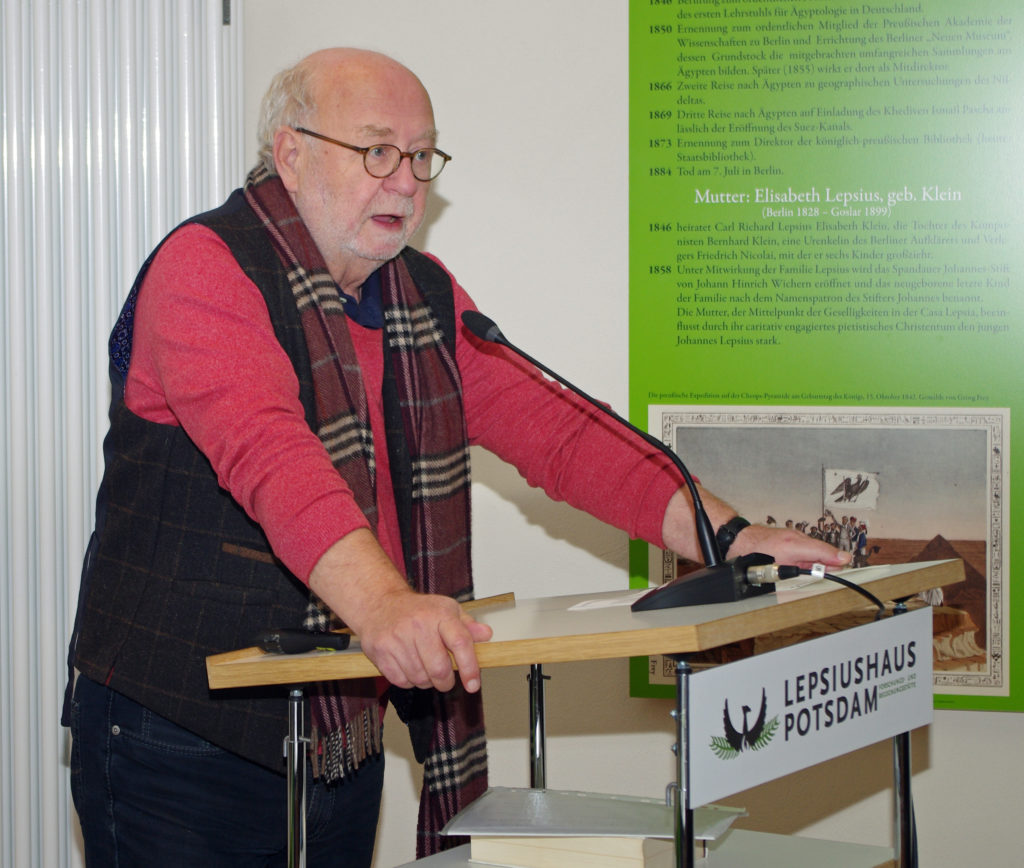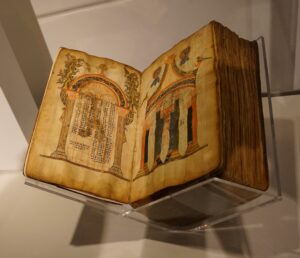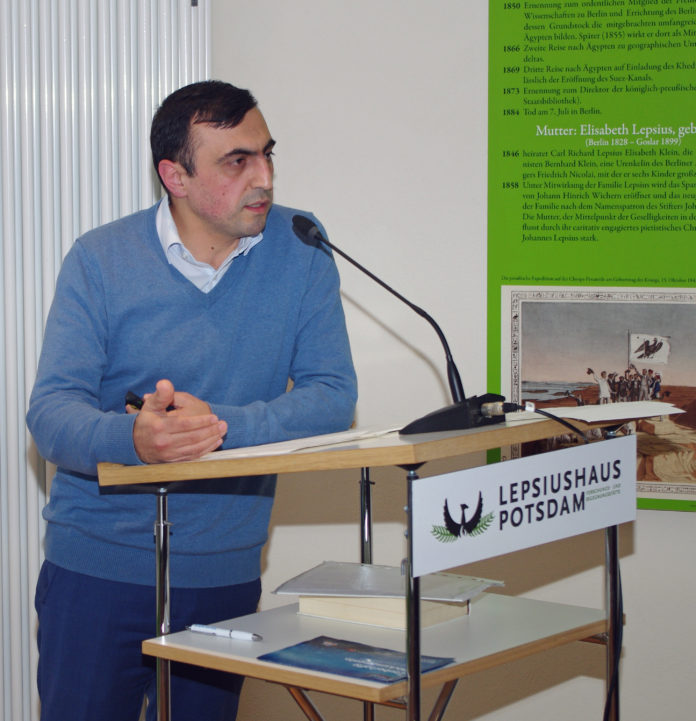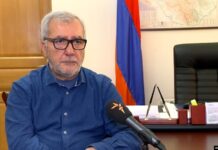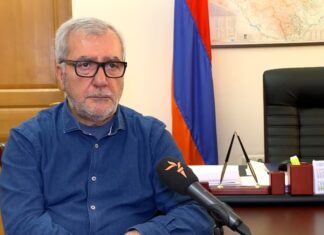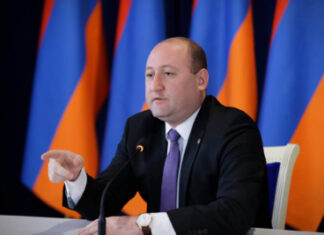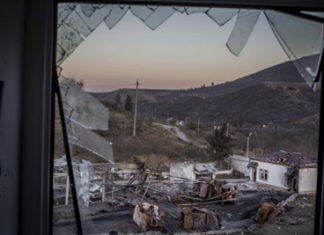POTSDAM, Germany — In the extensive literature of the Armenian Genocide, memoirs of single survivors play a special role. Each story is different, and yet all share certain characteristics; the trauma of the events, separation from loved ones, uncertainty and fear regarding the future. Among the survivors are many whose names have gone down in history. At the same time, there were hundreds of thousands of orphans, many of whom ended up in Turkish families, and their identities were lost in time. The more fortunate managed to retain their identities as Armenians, and to find new homes abroad.
Heinrich Melidonian was one such orphan, who was born in the Ottoman Empire and ended up in Germany and France. Dr. Hayk Martirosyan has reconstructed his fascinating story on the basis of the young man’s writings and of research into archives in Germany. Martirosyan, who is a scientific collaborator at the Lepsiushaus in Potsdam, presented the results of his efforts in a lecture there on October 31.
Heinrich Melidonian, born in 1901, was given that name on the request of Sister Paula Schäfer and baptized by the Protestant Father Richard Brunnemann. The infant had been taken in by the orphanage of the German Hülfsbund für Christliches Liebeswerk im Orient (DHCLO), a relief organization in Marash. Thanks to donations given by “foster” parents in Germany Deacon Otto Clarenbach and Pastor Kuhlo, Heinrich could live and receive medical care in the orphanage until 1915.
The Germans had sent up hospitals, orphanages and schools in various Armenian villages during the Hamidian massacres (1894-1896), a few of which survived the genocide that began in 1915. The Marash orphanage was one of them. Despite the support it received from the German Consul in Aleppo, Walter Rössler, it came under pressure from the Ottoman authorities and had to give the children to relatives, if they had any, or to Armenian families who received financial support from the orphanage. Heinrich was one of these so-called “Kostenkinder” and lived with a certain widow Turwand for a while. Later, when he was allowed back into the orphanage, deportation orders came down; he was sent off with other youngsters to work on the Baghdad railway, but, sick with malaria, had to be sent back. In this way, he survived the massacres and in late 1918 began an odyssey which took him to Cilicia, and then Adana and beyond. Thanks to his years in Marash, where he learned German, Turkish and English, he was better equipped than others to seek work, which he found as a translator. In 1920, he accompanied children under the care of Near East Relief who were evacuated from Adana to Cyprus. There he was able to attend the American College, before going with the children on to Tarsus, where he studied at the American St. Paul’s college.
Again, due to political events, he had to flee, this time to Smyrna (Izmir). When their ship was stopped and the Turks hauled passengers out to kill them, he and other children managed to survive by hiding. “I promised Him,” Melidonian later wrote, “that I would devote my entire life to Him, if he saved me from this mortal danger.” In Smyrna he was able to study at the American college and in 1922 was confirmed in the Protestant church. During the massacres in Smyrna in September 1922, he and other students were arrested and released only in May 1923, in the context of negotiations of the Lausanne Treaty. From there he travelled to Greece, then to France, from there to England, then Canada, and when not allowed to settle there, returned to France. In 1927, thanks to the mediation of his “foster” parents, he was admitted to the Johanneum Protestant School in Wuppertal-Barmen, then entered a course at the Karlshöhe Diaconate Institute. He became a deacon but was not allowed to work as a pastor in Germany. He collaborated with the YMCA in various cities.
In the late 1930s Melidonian began to write about his experiences. Past, … but Not Forgotten! Memoirs and Experiences of an Armenian Orphan and the Missionary Station at Marash in Asian Turkey was one book; By Dangerous Cliffs was another; and Light after Darkness yet another. In these works, Martirosyan said, “he described his wanderings through the Ottoman Empire and the difficult life of the orphan and prisoner that he led. These books,” he added, “are still very important today as memoirs of an eyewitness during the genocide with very detailed descriptions and images.”
